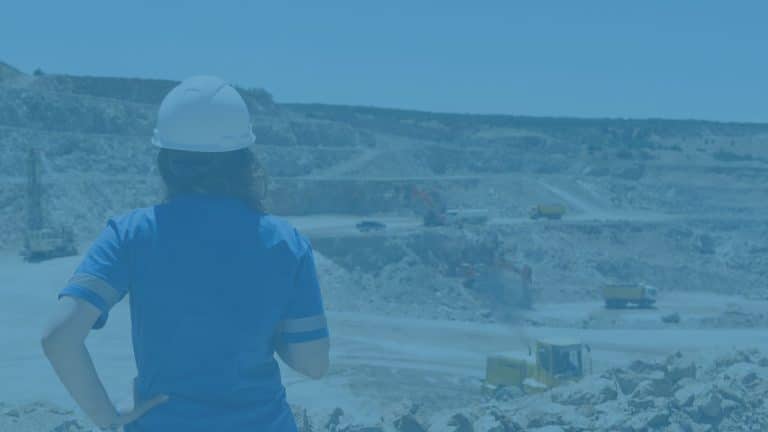

October 2022 Edition!
AIU News + Essays + Education + Culture + Science + Technology + Art + Design + Body + Mind + Environment + Human Rights + Animal Rights + Project Management + About AIU
Promoted to Associate Professor

AUGUST 19, 2022. The Ministry of Higher Education in the Democratic Republic of Congo has nominated Prof. William Sendihe and promoted him to the Title of Associate Professor. He is now a fully authorized Professor for all Universities in DRC and wherever his services may be needed. He is currently attached to Institut Supérieur Pédagogique de Goma/ ISP Goma (Goma College of Education), Department of English, in the field of English Language Teaching and Linguistics. The following are the courses Prof. William Sendihe teaches as his areas of expertise: 1. Phonetics and Phonology 2. General Linguistics 3. Applied Linguistics 4. English Linguistics 5. Research Methods 6. Theories of Translation and Interpretation 7. Seminar of Linguistics 8. Conversation Techniques 9. Writing Skills 10. Semantics and Pragmatics Prof. William Sendihe has completed a Doctorate program in Education with a major in Applied Linguistics at AIU.
ASIC is full membership of the QA association

SEPTEMBER 13, 2022. The Accreditation Service for International Schools, Colleges & Universities (ASIC) has been awarded Full Member status of the International Network for Quality Assurance Agencies in Higher Education (INQAAHE). This milestone is not only recognition of their growth as a company and the quality of ASIC Accreditation, but it also affords their institution, and AIU too, a whole host of new benefits as ASIC participates in activities covering the latest trends, aspirations, and challenges concerning higher education worldwide. INQAAHE offers a plethora of services, including events, training, a journal and regular news bulletins, a good practice database, and funding for projects and professional qualifications in Quality Assurance. INQAAHE is proactive in setting and raising professional standards worldwide; in official partnership with UNESCO, it provides a forum to discuss global issues beyond national or regional boundaries in areas such as crossborder education. Find more information here: https://www.inqaahe.org/unesco https://www.asicuk.com/news/ milestone-asic-inqaahe-membership/
13 TH INTERNATIONAL CONFERENCE ON The Constructed Environment

Call for Papers This Conference will be held 17–18 May 2023 at University of Hawaii at Manoa, Honolulu Hawaii, USA. We invite proposals for paper presentations, workshops/ interactive sessions, posters/ exhibits, colloquia, focused discussions, innovation showcases, virtual posters, or virtual lightning talks. 2023 Special Focus: “Human/Nature: Towards A Reconciliation” Theme 1: The design of space and place. Theme 2: Constructing the environment. Theme 3: Environmental impacts. Become a Presenter: 1. Submit a proposal 2. Review timeline 3. Register Early proposal deadline October 17, 2022 Early registration deadline November 17, 2022 Visit the website: https://constructedenvironment. com
Graduated with Distinction

SEPTEMBER 5, 2022. One of our graduates, Djjimadoum yan Kayamou Enoch, being the first Chadian with the rank of Doctor in Health Economics, has just been appointed Special Adviser to the Presidency of the Republic. The Republic of Chad, is a landlocked country at the crossroads of North and Central Africa. It is bordered by Libya to the north, Sudan to the east, the Central African Republic to the south, Cameroon to the south-west, Nigeria to the southwest, and Niger to the west. The capital and largest city is N’Djamena.
SEPTEMBER, 2022. This graduate student completed the majority of the requirements to obtain honors, which included a 4.0 GPA, published works, recommendation from their advisors, patent a product, etc. Congratulations!
CUM LAUDE
Orlando Cárdenas Ochoa
Bachelor of Business Administration
Business Administration and Marketing
SEPTEMBER, 2022. This graduate student completed their program with a high cumulative grade point average, which reflects the quality of performance within their major. Congratulations!
DISTINCTION
Gisella Carla Mautino
Doctor of Statistics
Queen Elizabeth II Statistics
Solidarity


Bachelor of Spo rts Science
Sports Science
Argentina
Carlos Daniel Hogiste Robinson
Bachelor of Science
Psychology
Colombia
Estebania Cabrera Villamán
Doctor of Literature
Language and Literature
Dominican Republic
Khalil A. Khalil Shokeh
Doctor of Arts
History
Israel
Delight Joseph Ngwira
Doctor of Economics
Development Economics
Malawi
Paul Osayimwense Omoruyi
Master of Business Administration
Business Administration
Nigeria
Taisha A. Barry
Bachelor of Education
Primary Education
Saint Kitts and Nevis
Ethel Alvena Symonette-Johnson
Doctor of Philosop hy
International Business Administration
USA
Sarah Nyirongo Noma
Doctor of Public Health
Public Health and Health Promotion
Zambia
Gisella Carla Mautino
Doctor of Statistics
Statistics
Argentina
Jose Pablo Perez Guillen
Bachelor of Social and Human Studies
Human Resources
Costa Rica
Rocío Jael Balladares Pin
Bachelor of Nutrition
Nutrition
Ecuador
Thelma Badio Jacques
Bachelor of Education
Special Education
Ivory Coast
Linda Alexandre Manjate Magaia
Master of Public Health
Public Health and Health Promotion
Mozambique
Uzoma Fidelis Chukwubuike
Doctor of Philosop hy
Finance
Nigeria
Lester Clarence Celestin
Bachelor of Vocational Education
Crop Production
Saint Lucia
Andres Sebastián Proaño Castillo
Bachelor of Business Administration
Business Administration
USA
Davison Mange
Doctor of Philosop hy
Innovation in Economics
Zimbabwe
Certificate of Finance
Banking and Finance
Botswana
William García González
Doctor of Economics
Economics
Costa Rica
Juan Esteban Douosdebés Costa
Bachelor of Economics
Sustainable Development
Ecuador
Livinus Adakole Onogwu
Doctor of Philosop hy
Development Economics
Kenya
Melvin Aurélio Chiziane
Master of Business Administration
Business Management
Mozambique
Aliyu Sule Musa
Doctor of Science
Project Management
Nigeria
Francis Hinga Lahai
Doctor of Science
Civil Engineering
Sierra Leone
Nora Elizabeth Cabrera Mencia
Bachelor of Human Resources
Human Resources
USA
Coulibaly Issiaka Valentin
Doctor of Social and Human Studies
Public Health
Burkina Faso
Michael Partasides
Bachelor of Business Administration
Business Management
Cyprus
Luis Klever Toapanta Garcia
Bachelor of Science
Agricultural Engineering
Ecuador
Stephen Gatimu Njoroge
Bachelor of Project Management
Project Management
Kenya
Nicolás Alejandro Rodas Urrutia
Bachelor of Marketing
Marketing
Netherlands
Hugo Ernesto Blanco Salazar
Bachelor of Psychology
Organizational Development
Panama
Teboho Olin Mosikili
Bachelor of Science
Industrial Engineering
South Africa
Aiyeyun Christiana Temitope
Master of Science
Human Resources Management
USA
Find More Graduates

Testimonials
FIND MORE TESTIMONIALS FROM A I U STUDENTS HERE: https://wp24.aiu.edu/Testimonials.aspx

Calvin Maguu
Bachelor of Education
June 15, 2022
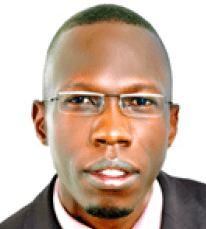
Daniels Ochieng
Bachelor of Information Technology
June 21, 2022

Ericka Martinez
Doctor of Psychology & Grief
June 27, 2022

Ibrahim Ibrahim Doctor of Enviromental Engineering June 29, 2022
What is life nowadays for the human beings?
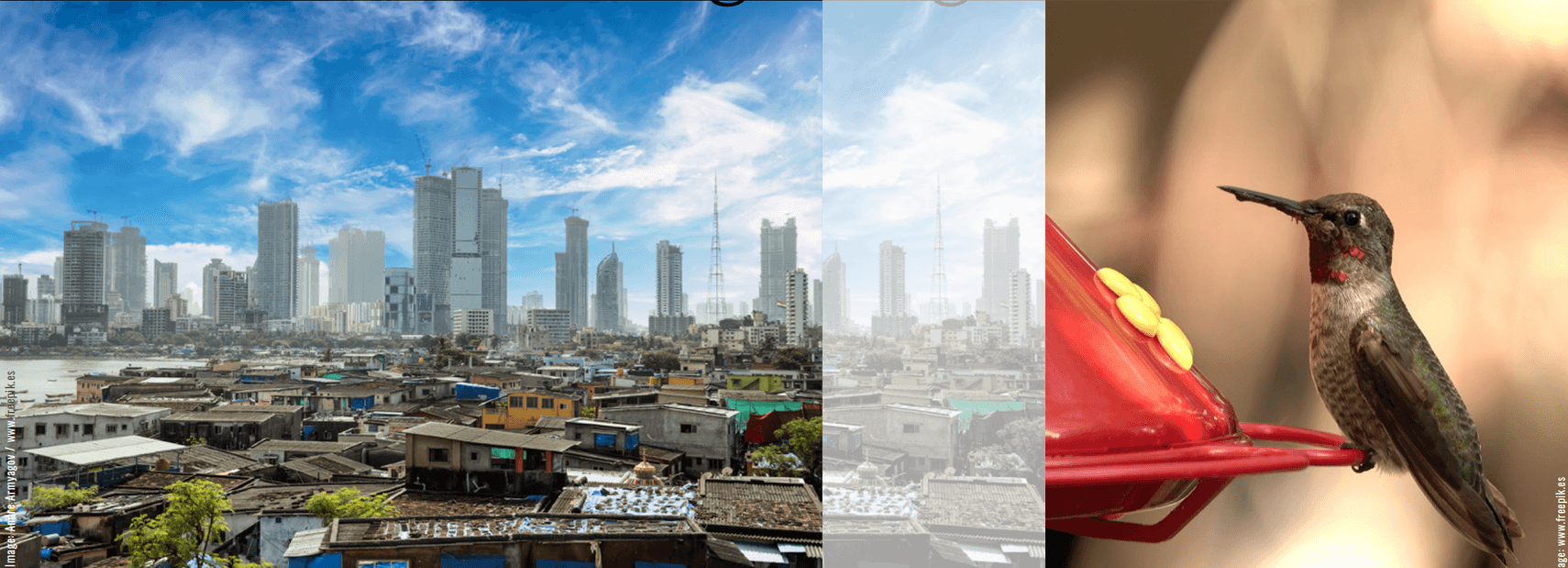
In the nowadays world it seems that we don’t know where we are going. We observe throughout the world a serious conflict between those who want renewable energy and those who persist in dirty energy. It seems that the economy, in terms of who makes the most money, is what they persists. We also observe, with regret, governments and governments that only seek the enrichment of those in power and forget the other human beings who don’t follow them. They also forget the less fortunate who follow them. Those less favored have remained in the situation in which they live because they have been forgotten by the government systems, which didn’t take care of offering them education, and now they have them with the hope that they will give them the wellbeing that they lack. They keep them with that hope through miserable aid to commit them to the vote, in the countries where th is voting, and thus they make them believe that they are democracies. In countries where there’re no free votes, they are kept in total abolition of democracy and therefore of rights. What can we expect from a world in these conditions?
We know that science is built by creating new theories and expanding existing ones. We will apply the thought of Fritjof Capra regarding life Capra: doctor in Theoretical Physics; graduated from the University of Vienna. Capra’s works: The Tao of Physics, Unusual Wisdom and The Crucial Point. Here we have worked with another of his works: The hidden connections- Social, environmental, economic and biological implications of a new world view. Let’s see what Fritjof Capra said in his work The Hidden Connections about life, back in 2003, the beginning of the 21st century. The book is a proposal of life, which is based on the thought of Humberto Maturana and Francisco Varela exposed in the work The Tree of Knowledge. This proposal was called Autopiesis, and is known as the Santiago Theory. For Maturana and Varela, autopoiesis is the result of their training in cybernetics, constructivism, and complexity theory. An autopoietic system is a system that produces its components and a membrane that limits them. Capra links this proposal with Ilya Prigogine’s system maintenance theory. Prigogine’s theory is explained by what he called dissipative structures, which is an open system that maintains stability while remaining far from equilibrium.
According to Prigogine in his work Just an Illusion?: “The most important new feature is that, when we deviate a lot from non-equilibrium conditions, new states of matter arise. I call these cases “dissipative structures”, because they present structure and coherence, and their maintenance implies a dissipation of energy”. (Prigogine, 2009, p. 185) With the aforementioned conceptions, we began at the end of the 20th century a form of organization of society, in terms of trade and culture, called Globalization. With globalization we also have the World Trade Organization (WTO). Capra says: “After the creation of the WTO, in the mid- 1990s, economic globalization, characterized by “free trade”, was hailed by business and political leaders as a new order that would benefit all nations, since it would cause a global economic expansion whose beneficial effects would reach all corners of the planet and each one of its inhabitants”. (Capra, 2003, p. 171) Let’s see what life is for Capra who took as his foundation the thought of Maturana and Varela as well as Prigogine.
Capra says: “The problem is that human organizations aren’t only living communities, but also social institutions designed for specific purposes and operating in a particular economic environment, and today this environment is not life-sustaining, it is life-destroying increasingly”. (Capra, 2003, p. 167) From what Capra said in 2003, we are experiencing the environmental crisis with the floods, for example in Pakistan, the fires in Europe and the melting process of the North Pole. We are also witnessing heat waves and lack of food. To the above we must add the political situation, it seems that the world, where more governments arise every day where the only thing that matters is to see who gets the most money. There is a political crisis and a crisis of communication between human beings: everywhere there is violence and more violence. Peace and good for the other seem to be erased from human coexistence. Capra tells us that life is part of a process of emergence or balance of a system that is maintained with changes and at the same time maintains balance. What we are witnessing is: conflicts between countries, between people and with nature: conflicts and disagreements everywhere.
“Throughout the living world the creativity of life is expressed through the process of emergence”. (Capra, 2003, p. 160) Here he follows Prigogine on dissipative structures: Regardless of the search for that balance, as for what happens in the environment, it will always tend to that balance. Here is Prigogine’s theory of dissipative structures. “A living network responds to disturbances with structural changes, and chooses which disturbances it responds to and which it doesn’t”. (Capra, 2003, p. 150) We human beings have the freedom to choose what maintains the balance of the system. The mentioned systems are autogenetic “…living social systems are autogenetic communications networks”. (Capra, 2003, p. 144) The reason those systems are autogenetic is because they always make themselves up. According to the systemic understanding of life, living systems endlessly create or recreate themselves by transforming or replacing their components.
(Capra, 2003, p. 136) What we are living in the present is the search for life systems and the creation of their components through what already exists, Maturana and Varela’s Theory, and their balance, Prigogine’s theory of dissipative structures. The big questions are: 1. How long will it take to create autopoietic elements that maintain its growth and that growth is for life? 2. How long will it take to coexist with the other? a) at the country level? b) on a personal level? 3. How long will it take to know that our life depends on the life of nature? 4. How long will it take to organize trade for human needs instead of for marketing?
5. How long will it take to create knowledge systems for knowing instead of to perpetuate political systems? The time we take means the search for the growth of the system based on its components —Maturana and Varela— and its balance —Prigogine—. Another question is: 6. How many will die before reaching that equilibrium? Life depends on us: for each one and for the planet.
BIBLIOGRAPHY. The bibliography presented is based on the way in which science is constructed: a) From new theories or analyses. b) From analysis of new elements of theories already worked. Theories already worked: Fritjof. C. 2003. Las conexiones ocultas. Implicaciones sociales, medioambientales, económicas y biológicas de una nueva visión del mundo. Barcelona: Anagrama. • Maturana H. Y Varela F. 2004. El Árbol del Conocimiento. Bases Biológicas del Entendimiento Humano. Argentina: Lumen. • Prigogine I. 2009. ¿Tan solo una ilusión? Barcelona: Tusquets editores.
Discipline in the public schools of Villa Hermosa
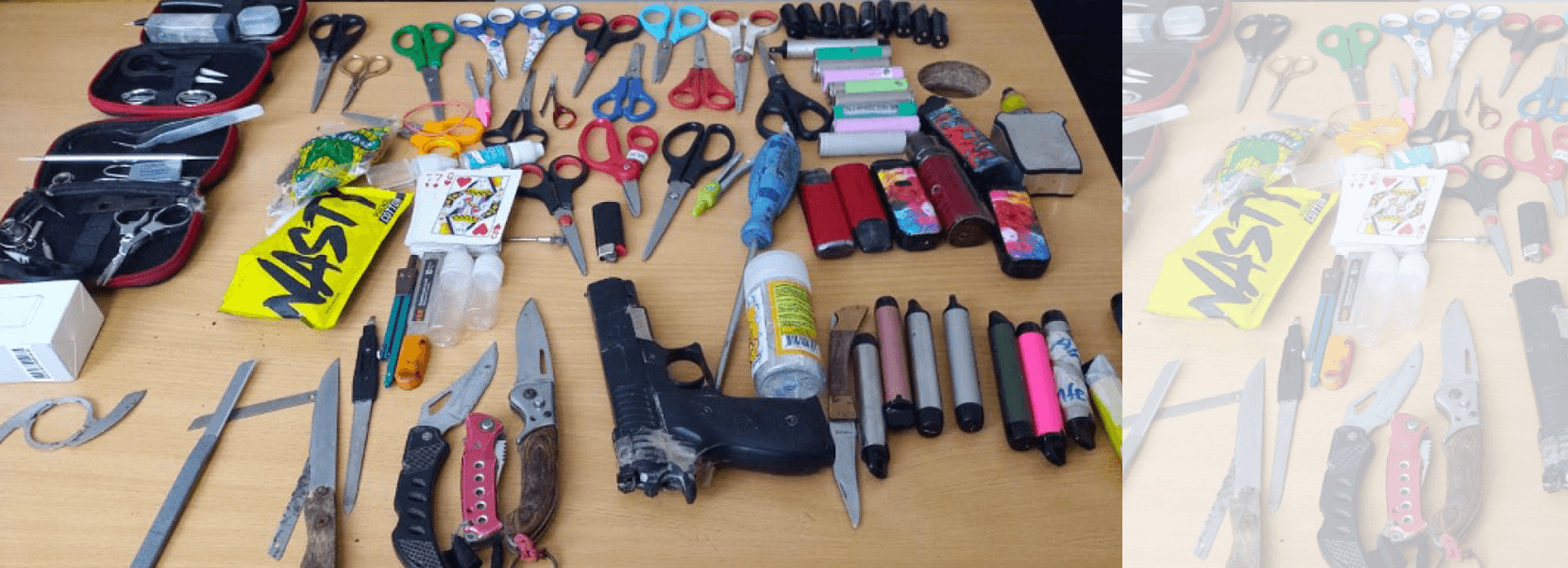
School discipline is the guidelines that students must follow based on a code of conduct called school rules. In the Municipality of Villa Hermosa, La Romana Province, in the Dominican Republic, a problematic environment reigns in the 2021-2022 school year. This is a cause for concern, vandalism is observed, which affects to the point of leading students with excellent and moderate behaviors to fall into this disorder and lack of respect among classmates and towards the authorities.
It is considered that the lack of influence in the formation of parents and the promotion of values from home, society, especially the type of music that is promoted at the national level, the ministry of education through an educational policy that favors students, making way for them with the permissiveness that is given to the authors of learning, they bring various tools to educational centers, from vape in the form of crayons, guns, knives, and various sharp objects to hurt their classmates and in occasions to teachers or authorities who intend to implement the regulatory discipline. All this added to the use of prohibited substances leads them to have a high level of nervousness and anxiety that results in low tolerance for any word or friction with their peers and others.
It is observed in high schools and polytechnics that discipline can be controlled when consequences are applied since it is not the same to see students who know that they will have a correction for their actions and those who express that nothing will happen to them. This is because the rules of school coexistence within the corrective measures that they promote include minor, serious, and severe offenses, but these in the end do not seek a correction to eradicate the disciplinary problem, but instead diminish its momentary development, so each center creates its standards and applies its measures in favor of its best functioning. We live in a changed time, and traditional methods cannot be used in terms of discipline, but it is known that good management of the rules always entails corrective measures for those who violate the laws and the rules of coexistence.
The Dominican Educational System, Chapter V of Law 136-03 defines the fundamental guarantees aimed at the full enjoyment of the Right to Education, to strengthen the governing role of the General Education Law 66-97 and its regulations. As part of these guarantees, it considers that the practice of a positive school discipline and promoter of opportunities, established in article 48 of Law 136-03, constitutes the most solid platform for the enjoyment of a healthy coexistence in educational centers, which shape and model best citizenship practices. The System for the Protection of the Fundamental Rights of Boys, Girls, and Adolescents. Law 136-03, establishes the regulation of school discipline and invites the elaboration of regulation to make this mandate operational together with the Ministry of Education of the Dominican Republic (MINERD). This allows them the opportunity to create measures according to the needs of educational centers for the training of young people who are better citizens.
Having seen and analyzed the various media, it is understood that what most affects discipline is the lack of a system of consequences that leads adolescents to reflect on their actions and modify these behaviors for the common good in Dominican education. To all this, it is suggested to take into account the age, and the degree of indiscipline committed by the student, to apply the measures as appropriate, including Community work in the center. Prepare the stage so that these students can make reflective productions according to the indiscipline or the fact that has occurred.
Learning
Finding your voice
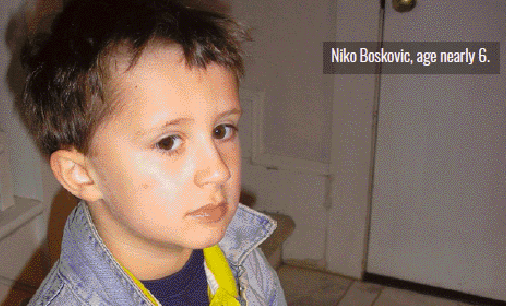
Question: My [autistic] daughter is nearly 6 and currently non speaking. … What was the path was for you from not having language to being able to express yourself through language? … Answer by Niko Boskovic: …When I was little … so much of what I heard was overshadowed by everything my sensory system was hearing. All the sounds combined into a wave of sound that drowned out their voices, and I found myself completely unable to focus on my parents’ words. It took me years to learn how to triangulate all the sensory communication I was receiving so that I could focus on the task at hand. … I am writing this as I can still hear the refrigerator humming and dogs barking and my sister coming into the yard and my mom swallowing and something going on with our stove’s clock… In the past, I would have already gone to explore these inside my head, but now I have the control to put that aside for a more desired activity: writing you! Your daughter has a lot of language at the moment, but she may be getting stuck in the fields of competing sounds, and doesn’t have enough self-control yet to find your voice in the din. … I would focus on making a lowdistraction environment available, and doing the stims she enjoys. Stimming is so important to autistics as a way of handling the stimuli coming at us twenty four hours a day. So when you also enjoy the stim, it’s like you become one of the stimuli feeding my attention. Eventually, YOU become the most important sensory stream … Read full text:
When the big one hits
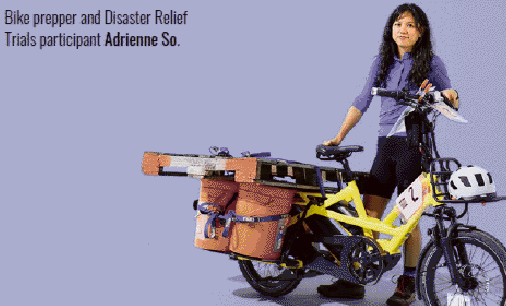
The Disaster Relief Trials (DRT) include a 30-mile bike race wrapped in an apocalyptic post-earthquake scenario. The race is designed to simulate the conditions after a major disaster, and in Portland, Oregon that disaster will probably be the Big One: the magnitude 9.0-or-so earthquake that has a one-in-three chance of leveling the Pacific Northwest in the next half-century. There are only around 12,000 first responders in the entire state of Oregon, but Portland alone is home to 650,000 residents. In other words, the first person to realize you’re trapped in the upper story of your rickety woodframed house probably won’t be the professionally trained EMT (Emergency Medical Technician) who answers a 911 call. It will be your neighbor poking her head out of the window and grabbing a ladder out of the garage. … After the Big One, bridges will collapse. Debris, damaged roads, and a lack of fuel will make it impossible for emergency vehicles to pass. A bike, though, can go almost anywhere. In the decade since it was founded, the DRT has evolved from an event run mostly by pedal punks to a training exercise for the Portland Bureau of Emergency Management. Neighborhood emergency response teams work the race to serve their volunteer hours. Every rider who completes the DRT’s circuit gets a sticker that tells their … Read full text:
AIU makes a huge contribution to the world by giving new scient ifics the space for original investigations and research. Visit MyAIU Evolution
The Big Bang

Did the Big Bang happen? Has the James Webb Space Telescope found evidence against the Big Bang? … I can’t blame readers for being confused by recent news stories about the Big Bang. The article that kicked them off, “The Big Bang Didn’t Happen,” is bad enough. But some of the rebuttals also don’t get it right. The problem is that writers conflate ideas in astrophysics and use the term “Big Bang” incorrectly. Let me set the record straight. … The James Webb Space Telescope is an amazing instrument. It looks at young stars and galaxies that were formed long after the cosmic microwave background, at about 200 million years. That’s impressive, but it doesn’t tell us anything about the Big Bang Event, or its alternatives. The problem has long been that the term Big Bang is used to refer to the expansion of the universe in general, and not to the event of the creation of the universe in particular. These are, however, two separate scientific hypotheses. We have overwhelmingly strong evidence that the universe expands (call it Big Bang #2) [Big Bang #1 would be the beginning of the universe], and we are confident about its history back to about the time of the electroweak phase transition, which is what the Large Hadron Collider probes. We have to date zero evidence for the beginning of the universe, whether it was a Big Bang Event or something else. …
Read full text:
Plant-insect interaction

When 8-year-old Hugo Deans discovered a handful of BB-sized objects lying near an ant nest beneath a log in his backyard, he thought they were a type of seed. His father, Andrew Deans, professor of entomology at Penn State, however, knew immediately what they were —oak galls, or plant growths triggered by insects. What he didn’t realize right away was that the galls were part of an elaborate relationship among ants, wasps and oak trees, the discovery of which would turn a century of knowledge about plant-insect interactions on its head. … According to Andrew Deans, many plant-insect interactions are well documented. For example … certain plants produce edible appendages, called elaiosomes, on their seeds to attract ants, which then disperse the seeds by carrying them back to their nests. This is referred to as “myrmecochory” —or seed dispersal by ants. … The team’s new research revealed a much more complex type of myrmecochory … “Ultimately, this led us to discover that gall wasps are manipulating oaks to produce galls, and then taking another step and manipulating ants to retrieve the galls to their nests, where the wasp larvae may be protected from gall predators or receive other benefits. This multi-layered interaction is mind blowing; it’s almost hard to wrap your mind around it.” … Read full text
Get a better knowledge about our rights and the way we can use them on a daily basis to prevent any abuse or limitations of them. Visit MyAIU Human Rights.
Fifty one Apparel

A technology considered for managing heat in spacesuit gloves is being repurposed for clothes. Textile marketer Louise Nicholson wanted to create specialty clothing that would help reduce discomfort for menopausal women and chanced upon the perfect material, which NASA funded. The cutting edge science that goes into all of their products rather than just wicking away sweat, allows their clothes control the production of moisture before it starts. … Read full text:
Ifetayo Ali-Landing
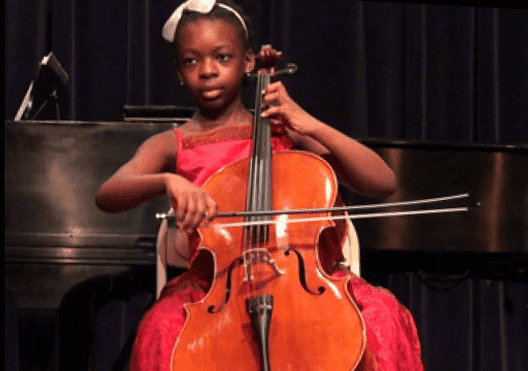
American cellist Ifetayo Ali-Landing is quickly establishing herself as one of today’s leading young artists, earning praise for her “charismatic” playing (Chicago Tribune) and being described as a “powerhouse” by Classical MPR. In 2017, Ali-Landing won the First Place Laureate of the Sphinx Competition’s Junior Division and has since gone on to perform with the Chicago Symphony Orchestra at Ravinia (under Marin Alsop), Detroit Symphony Orchestra, Pittsburgh Symphony, New World Symphony, Chicago Sinfonietta, Wilmington (NC), South Bend, Southwest Michigan and Elgin Symphonies, Buffalo Philharmonic, and Vermont Symphony Orchestra on a state-wide tour; recitals include the Kansas City Harriman-Jewell Series and The National Arts Club, among many others. Ali-Landing features frequently in the media, with notable appearances on NPR’s From The Top (where she performed Vivaldi with Kevin Olusola beatboxing), a residency as Young Artist with APM’s Performance Today, and a TED talk at TEDxYouth@BeaconStreet. Her musical studies began on the violin before switching to cello at the age of four. Previous teachers and coaches include Lucinda Ali-Landing, Megan Lauterbach, and Martine Benmann at the Hyde Park Suzuki Institute in Chicago, as well as Tahirah Whittington, Oleksa Mycyk, and Hans Jørgen Jensen. She currently studies at the Colburn School in Los Angeles with Clive Greensmith. … Read full text
Degree INC

Adaptive design studio Sour and creative agency Wunderman Thompson have developed accessible deodorant packaging for Unilever [Degree Inclusive] to make the product easier to use for people with limited mobility or visual impairments. To create the product the company partnered with adaptive design studio Sour and inclusive creative agency Wunderman Thompson, which is led by designer Christina Mallon who has limited arm mobility herself. … The Degree Inclusive design has a number of features new to deodorant packaging including an easy-grip shape and a larger roll-on applicator that can cover more surface area in one swipe. The cap has a magnetic closure that allows it to be taken off and put on more easily. The hooked lid also allows the deodorant to be hung to enable one-handed usage and the label features instructions in braille. … Read full text:
Live a better life learning how to keep your body, mind and soul balanced. Visit regularly MyAIU Body / MyAIU Mind / MyAIU Spirit and MyAIU Energy.
Nightshade

According to VersusArthritis.org in the United Kingdom, there is no evidence of a link between nightshade vegetables and inflammation. People in particular often blame tomatoes for worsening arthritis symptoms. Nightshade vegetables are part of the plant family Solanaceae. Some species are toxic, including the belladonna plant. However, humans commonly cultivate and eat other species.Common nightshade vegetables that we eat include white potatoes, tomatoes, eggplant, bell peppers, cayenne pepper and paprika. It is important to note that nightshades contain alkaloids, such as solanine, which is toxic in high concentrations. Solanine is present in trace amounts in potatoes and is typically safe. However, the leafy stalks of the potato plant and green potatoes are toxic, and eating green potatoes can lead to poisoning. Nightshade vegetables contain many health-promoting compounds, such as lycopene and beta carotene in tomatoes and anatabine —an alkaloid compound— in peppers, potatoes, tomatoes, and eggplant. According to a 2020 article, anatabine has powerful antiinflammatory effects. That said, if a person feels that certain foods, such as nightshades, trigger their arthritis symptoms, they should avoid them. … Read full text:
Rituals
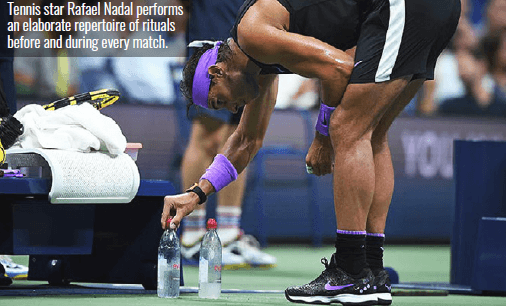
Over the decades, anthropological studies have shown that ritual practices come naturally to us, regardless of our cultures, and further, we expect them to have an effect. But is ritual really an effective stress-management strategy? Or is it simply an illusion, a waste of time or, worse, a dangerous distraction from our real problems? Field observations suggest that ritual may indeed help people cope with anxiety. In a study conducted in Israel, researchers interviewed local women during the Lebanon War (2006). They found that among those women who experienced the stress of war, reciting psalms was associated with lower overall stress levels. No similar association was found for women living outside the war zones. While participants were the judges of their own anxiety, similar effects were found at the physiological level. In my lab at the University of Connecticut, my colleagues and I observed a group of students during the midterm exams, one of the most stressful periods of the year. We collected hair and saliva samples, which we used to measure levels of cortisol, a hormone associated with stress. Salivary cortisol changes over the course of a few minutes, but traces of the hormone also accumulate in our hair, and they can be used to track long-term anxiety. We found that students who participated in more rituals had lower anxiety across all these measures. … Read full text:
Find Open Courses and a world of learning granted by AIU at courses.aiu.edu Help others study and change their lives. Visit MyAIU Pledge.
Europe’s drought

Europe’s summer of drought has been impossible to ignore. Rivers dried up, exposing the skeletons of warships and ancient buildings. Images captured by satellite show swathes of the continent’s normally verdant fields turned to parched dust bowls. The hot, dry conditions have also wreaked havoc on Europe’s agriculture. Most of the continent’s water-starved fields will produce lower than expected yields this summer. For some crops the difference is stark: Soybean yields are 15% below their five-year average while sunflower yields are 12% down. With agricultural supply chains already stretched because of the war in Ukraine, the vulnerabilities in Europe’s food system are looking extremely exposed. In response, some European politicians are starting to rethink the European Union’s long-standing opposition to genetically modified (GMO) and gene-edited crops. In July, an Italian member of the European Parliament called for a loosening of the rules that restrict crop varieties created using new gene-editing techniques like CRISPR from being grown and sold within the EU. “New agricultural biotechnology can provide experimentation for more drought- and pest-resistant plants,” member Antonio Tajani said in a meeting at the European Parliament. Other Italian politicians have joined him in calling for similar changes to gene-editing regulations. In northern Italy, the drought is so severe that rice fields are drying up and …
Read full text:
Rollie pollies

Also known as pill bugs, ball bugs, or wood-lice, these grey-colored creatures can be found in many dark, moist environments feeding on decaying matter. They are crustaceans and more closely resemble crabs and shrimp, and they are characterized by their ability to roll up into a ball when they feel threatened. The guts of these pill bugs contain a number of microbes that help the critter feed on dead, organic matter. They return organic matter to the soil so it can be digested further by fungi, protozoans and bacteria. This process produces a natural supply of nitrates, phosphates and other vital nutrients for plants. One unique feature of these crustaceans is their ability to safely remove heavy metals from soil. For this reason, they are important for cleaning up soil pollutants such as lead, cadmium, and arsenic. In coal spoils and slag heaps, pill bugs also come in handy. When they take in heavy metals like lead and cadmium, they crystallize these ions in their guts. The heavy metal toxins become spherical deposits in the mid gut. With this special cleanup capability, pill bugs survive in the most contaminated sites where most creatures can’t. The magic of the pill bugs can reestablish healthy soil and prevent toxic metal ions from leaching into the groundwater. This means pill bugs are protecting well water from becoming … Read full text:
Find support for your own unique art and design projects, or support other creative projects at MyAIU Research
Mental health
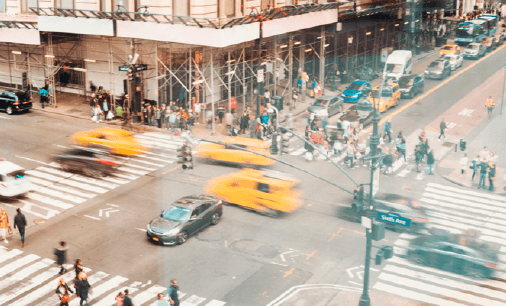
We are living, we’re told, through a “mental health crisis”. Mental health services cannot cope with the explosion of demand over the past two years: 1.6 million people are on waiting lists, while another 8 million need help but can’t even get on these lists. Even children are showing up at A&E in despair, wanting to die. But there is another way to see this crisis —one that doesn’t place it firmly in the realm of the medical system. Doesn’t it make sense that so many of us are suffering? Of course it does: we are living in a traumatising and uncertain world. The climate is breaking down, we’re trying to stay on top of rising living costs, still weighted with grief, contagion and isolation, while revelations about the police murdering women and strip-searching children shatter our faith in those who are supposed to protect us. As a clinical psychologist who has been working in NHS services for a decade, I’ve seen how we are failing people by locating their problems within them as some kind of mental disorder or psychological issue, and thereby depoliticising their distress. Will six sessions of CBT, designed to target “unhelpful” thinking styles, really be effective for someone who doesn’t know how they’re going to feed their family for another week? Antidepressants aren’t going to eradicate the relentless racial trauma a black man is surviving in a hostile workplace, and branding people who are enduring sexual violence with …
Read full text:
DNA from Tibetans
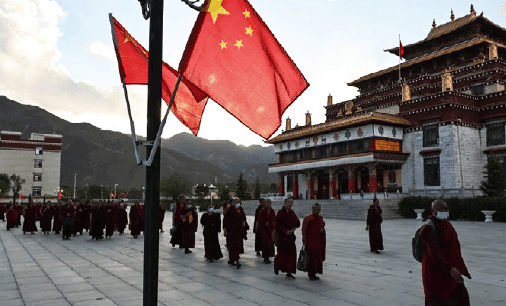
10 Tourist attractions

1 Riding elephants. These elephants have to be cruelly “broken” to allow people to ride them. The stress can also make them dangerous to people. 2 Taking tiger selfies. Tiger cubs are taken away from their mothers and drugged to make them tame enough. 3 Walking with lions. These wild animals face a lifetime of captivity, being manhandled by people every day and then “trained” to walk alongside them. 4 Visiting bear parks. Bears are often kept in barren, concrete enclosures with little or no stimulation. This creates mental and physical problems. 5 Holding sea turtles. Atrocious living conditions, disease outbreaks, and the stress of being repeatedly handled. 6 Performing and swimming with dolphins. These highly intelligent animals are kept in tiny pens rather than roam freely out in the oceans. 7 Dancing monkeys. Bound by chains for their whole lives, macaques are exposed to cruel and aggressive training techniques to make them walk. 8 Touring civet cat coffee plantations. There is strong evidence that they are in fact being farmed and living their lives in small barren cages. 9 Charming snakes and kissing cobras. These creatures have their fangs removed with metal pliers, and venom painfully blocked. 10 Farming crocodiles. They are kept in filthy, overcrowded pits, leaving them exposed to disease and violent infighting that can be fatal. …
Read full text:
Red foxes

During years that trees don’t grow so many cones, foxes may help increase spruce forest productivity. White spruce, like many coniferous trees, often alternate between productive and nonproductive years when it comes to cone production. The phenomenon isn’t well understood, but usually entire areas of forest are synchronized in these productive years, called mast years. Meanwhile, researchers had long known that Arctic foxes (Vulpes lagopus) can boost the vegetation surrounding their dens in areas north of the tree line —the edge of forests where trees no longer grow— by depositing nitrogen and phosphorous back into the soil through their feces. “You get this rich vegetation you can spot from a kilometer away,” said John Markham, a professor of plant ecology at the University of Manitoba. Markham and his co-authors wanted to see whether a similar relationship occurred between red foxes (Vulpes vulpes) and spruce south of the tree line. The researchers examined vegetation around dens near Churchill, Manitoba in July 2019 and compared them to areas without fox dens. They also bore into trees, using dendrochronology to assess the growth of yearly tree rings on fox dens and in control groups without fox dens. In research published recently in Basic and Applied Ecology, they found that foxes do, in fact, have an impact on white spruce. … …
Read full text:
Find Open Courses and a world of learning granted by AIU at courses.aiu.edu Help others study and change their lives. Visit MyAIU Pledge.
Campus
How to organise a protest march

A successful demonstration depends upon clarity of purpose, getting people there, getting the message to those who need to hear it, and leaving a sense of success and support for the issue with your target audience, your constituents, the public, and the media. If you consider beforehand whether a demonstration is the right vehicle for you to get your point across, there are really four major bases to cover in putting together a public demonstration: 1) Planning. 2) Lead time. 3) Communication. 4) Follow-up.
Prepare your protest If there is a single most important piece to organizing a demonstration, it’s planning it completely beforehand. The demonstration must have a coordinator and a group of organizers who work together before, during, and after the event to plan and carry it out. They need to decide what the demonstration will be like, and to anticipate potential problems and plan for them as well. 1. Build a team of organisers. The more like-minded friends and community members you have at your side, the better! Reach out and ask if they want to help you organize. Be sure that you are intentionally building relationships with those in your community who are directly impacted, centring their voices and experiences, and listening to their guidance. It is best if you can co-create your team and action together. Lastly, seek out local or regional organizations that work on your issue and invite them to organize with you. 2. Define your strategy. Answer these questions:
Goals- What do you want to achieve? Target- Who has the power to make that happen? Action- What kind of action would make them listen to you (tactic)? When and where should you organise this action to make the most impact? It’s important to decide whether you’re advocating for or supporting a position, protesting something, or planning a specific action. Your purpose will help to determine the tone and shape of the demonstration. If advocacy is your goal, the demonstration might be upbeat, singing the praises of whatever you’re advocating for. If your purpose is protest, or righting a wrong, then its tone will be different. Tone is important, because what you accomplish might depend on how the demonstration is viewed. If your demonstration leans too much toward entertainment and feel-good sentiment, it may not be taken seriously. If it’s frightening, people may not listen to its message. Ask yourselves what you are trying to achieve through this advocacy lane. Build awareness? Build a larger coalition? Be seen and heard by an elected official or influential figure? …
With your goals in mind, ask yourselves: when and where will you hold the protest and why? What type of protest is required to achieve your goal? The most common modes of protest are marches and rallies. But protests can take many forms: sit-ins, walkouts, vigils, and more sophisticated efforts like encampments and choreographed or theatrical expressions. Demonstrations may be meant to serve one or more different goals, depending upon the timing of the demonstration, the issues involved, who’s doing the organizing, and what else has gone before. Common goals for demonstrations include: Advocacy: To urge legislators or the public to look favorably on a bill, adopt a particular idea or policy or service, or pay attention to the needs of a particular group of people. Support: To express agreement or solidarity with a person or group, with an idea or policy, or with a particular issue. For example, a group of organizations offering different services might hold a Image: www.elperiodico.com 21 community demonstration to support the proposed establishment of more and better services for the homeless in the community. Protest: To speak against some injustice, event, public figure, potential occurrence, etc. A group might demonstrate against the possible establishment of a hazardous waste treatment plant in their community, or to protest the treatment of community residents by police. Counter-demonstration: To respond to a demonstration or other public event already scheduled by another, antagonistic organization. Public Relations: To advertise or put in a good light an event, issue, organization, segment of the population, etc. Action: To actually accomplish a specific substantive purpose, prevent or change a particular event, or to influence the course of events. A combination of any or all of the above.
In reality, most demonstrations serve more than one purpose. Regardless of their other goals, most organizers seek media coverage for the demonstration, for instance, in order to draw attention to their cause. Most demonstrations either advocate for and support, or protest against, something. The difference is in the emphasis, which may have a great effect on the form and timing of the demonstration. Decide who you’re trying to reach with the demonstration’s message, and who you want to attend. Contact other organizations, coalitions, etc. long before and get them to endorse (and attend) the demonstration. The time, place, and program should be geared to the desired audience. Decide where the demonstration will be. Your decision will depend on timing, on how large a space you need, on whether your demonstration is a reaction to something specific in a specific place, and on who you want to reach with your message. However, there are some important general questions you need to answer in choosing a place. Is it available for the time you need it? Do you need, and can you get, a permit to use it? Will it cost you anything, and can you afford it? Is it accessible to those with disabilities? Decide on a specific day, date and time. Sometimes, those are determined for you: a counter-demonstration; a particular vote in the legislature. But in general, these elements are determined by three things: • The availability of the people you want to reach. • The weather. Do you need a rain or snow date? • Conflicts with other events.
3. Choose an action tactic. Plan your program What you’re actually going to do at the demonstration also depends upon what you want to accomplish and who your audience is. There needs to be a clear structure for what will happen, and everything in the program should be geared directly to the desired results of the demonstration. Block out the schedule to the minute, and let participants know well beforehand how long they have in the program. Some possibilities for programs or program elements: Speeches may convince some people and bore others. Celebrity speakers may draw people and attention to the demonstration and to your issue. Speeches may be meant to convey information, convert the unconvinced, or simply fire up the crowd and supporters. Members of a target population may be the most eloquent spokespersons for their issue. Marches or other movement of demonstrators can serve to show the extent of support for your issue, and can dramatize —by the route chosen— where a problem is located, and who should be involved in a solution. They can also help to build group spirit, to expose large numbers of people to the existence of the issue, and to attract media attention. Entertainment. Music may energize people, address their emotions, and help to develop group spirit. It’s usually geared to the subject of the rally, with songs written for the occasion, for instance. Theater can be used to ridicule ideas being protested. If the entertainment is particularly good or includes celebrity performers, it’s almost sure to attract media and bystanders. A symbolic activity, such as each person lighting a candle, group song or chanting of slogans, the display of a picture or prayer can be a powerful way to communicate a message, solidify a group, and gain public attention.
Picketing may be used simply to make a point, or to discourage people from entering or patronizing a particular building or space because of their sympathy with the picketers’ issue. In either case, it requires a high degree of organization, but it creates a vivid picture in people’s minds, and makes a strong point. It can also make your organization seem more militant than it is, or than you want it to be perceived. Civil actions or civil disobedience can range from legal actions designed to accomplish a specific purpose to a few people engaging in a symbolic action designed to get them arrested or otherwise challenged (chaining themselves to the gate of a government building) to mass actions like civil rights marches or the blocking of troop movements in Tien An Men Square. Demonstrators must be willing to be arrested and face punishment, and organizers must train them beforehand to respond appropriately to the police and to the whole arrest procedure. Organizers must also be aware of the impact of these actions on how their issue is perceived by the public. 4. Logistics. Logistics are the nuts and bolts of any event, the who and how and when of what gets done. Each demonstration presents its own logistical questions, but some important ones are: • Do you need, how will you pay for, who will be in charge of, and where will you get… A sound system that works? Toilets? Medical facilities and personnel in case of emergency? Parking? Trash disposal? Signs or banners? A way of getting speakers or performers to and from the demonstration and the platform? • How do people in general get to and from the demonstration, and in and out of the space? How do they get home?
• Is there a need for crowd control (i.e. a potential for violence, or for horrendous traffic problems), before during, and/or after the demonstration? • Is clean-up needed? Who cleans up, and how? • What are the plans for meeting with the media before, during and after the event? • Are there plans for postdemonstration activities? If so, how will all this be handled? Try to think of every possible thing that can go wrong that you haven’t already addressed, and figure out what to do about it. Where are you going to get toilets if the ones you ordered aren’t delivered? What if there’s a counter-demonstration? What if only a few people show up? What if the media doesn’t show, or leaves too soon?
Anything you can anticipate and plan for is another crisis you don’t have to worry about: you’ll know what to do. Be ready and have a contingency plan. If your local police tend toward clearing protests quickly or even violence, you will want to share tips about self-protection against, for example, tear gas or pepper spray. If you are expecting extreme hot or cold weather, provide suggestions for staying safe. During the protest, everyone’s safety should be your number one priority. Ask folks how they’re feeling. Decide on what specific things you’d like to actually happen —and not happen— at the demonstration. How do you want people to behave while they’re there? Will there be some sort of action, and will it possibly lead to arrest or other confrontation with the authorities? How will you handle that? A crowd can be kept happy with food and entertainment, or angered by aggressive speechmaking: it’s up to the organizers to think through what they want. It’s important to confer with the authorities beforehand about use of space, to obtain the proper permits, and to work out with police and other officials how things will be handled, so that there are no misunderstandings. Make sure that those who are likely to attend the demonstration know what to expect and what you expect of them. 5. Determine your timing. When will a demonstration be most effective? If you can, it makes the most sense to schedule it to coincide with an event or time that will help draw attention to your cause, or that needs to be brought to public attention. Some possibilities include: • Just before or during a major event that the demonstration can influence. • The local visit of a political or controversial figure or group. • A demonstration by another group opposed to your cause or point of view. • A national day honoring or commemorating your issue. • As part of a funding drive for your organization or issue. • As part of a publicity campaign for your organization or issue.
6. Legal matters. Learn what local authorities require for public demonstrations in your community. You can often find specific permit requirements and guidelines on your local government’s website or by calling your town hall. When talking to the authorities, don’t shy from being clear about your needs, for example, to clear a road of traffic or provide a portable toilet. Make it clear to the authorities, and your supporters, that safety is a priority. Ask the authorities to maintain contact with your group during the protest, and tell them how to do so.
7. Promotion & outreach. Decide on how you’ll get people to come. To some extent, this depends on how much time and money you have to publicize the event, and how many people you want to attract. You have to reach people through methods they’ll pay attention to, in language they’re comfortable with. If possible, it’s best to get the message out many times in different ways, and to reach as many people as possible personally. Methods might include flyers, posters, phone calls, mailings, ads in newspapers and local church and organizational newsletters, public service announcements on local radio and TV, announcements in churches, clubs, and agencies, etc. You may want a versatile graphic to draw people’s eyes to your invitations. Get the word out through every social media channel that will reach your intended audience. Put up posters where people can see them like public bulletin boards and lamp posts. Ask shops if you can put posters up in their windows. But nothing beats face-to-face outreach. Time permitting, visiting neighbors and personally inviting them with fliers in hand is a highly effective way of growing a protest. Invite local television stations, newspapers, radio stations, and bloggers to your protest. Tell them what’s special about your protest and give them the most precise information about it you can. Encourage your invitees to post videos and photos to social media and give them a hashtag. 8. Build community. Every stage of protest planning is an opportunity to build solidarity and community. Keep an intentional lens on inclusion and intersection. Invite a wider circle of friends over for planning meetings. Signmaking parties are a great way to build relationships in advance of your protest. 9. Plan to keep it peaceful. You don’t want your invitees or spoilers to ruin your plans by damaging property or starting fights. Designate peace marshals within your team. A peace marshal’s job is to keep an eye out for anyone who is creating risks for your protests such as provoking police, vandalizing, etc. If tension rises, your peace marshals will step in and deescalate. You may also want to invite your local Lawyers Guild or other independent observers if you are concerned about keeping the peace or the police response.
10. Leave no trace. Leaving a mess is not a good look for your team or your cause. Make sure people know your expectations up front about discarding signs and literature. Set an example by picking up litter from your group. When you see someone littering, point them to the nearest garbage can. You want to learn from your experiences so you do an even better job organizing your next protest. After your team has had some time to reflect (but not too long after your protest) get your organizing team together to discuss how the protest went. Review how you did with each of the ten steps. Document the conversation for the next time you plan a protest. And finally, be proud of what you have accomplished; you organized your first protest.
Time needed to organise protest If possible, it is best to allow more than enough time in planning a demonstration to handle all the details and pull everything together. Celebrities or public figures of any kind generally are booked far ahead, and unless (or even if) this is their pet project, they’re not going to show up without adequate advance knowledge (at least several months). Sometimes acquiring, or even finding, a space to use can take longer than you’d think possible. Planning how to handle large numbers of people is difficult, and carrying out your planning is even more so. It’s vital to build extra time into your planning if you can. More than enough lead time is usually measured in months, and there’s no such thing as too much. Sometimes, however, a demonstration has to be planned in days, or even hours. The key to planning something successful under any circumstances is to be honest with yourself. What can you really do effectively in the time you have? Don’t overreach, and there’s a good chance you’ll end up with a demonstration that may be modest, but accomplishes your goals.
Communication The most important thing you can do when you begin planning a demonstration is, if you don’t already have one, to set up an efficient and usable communication system. This system should be available not only for demonstrations and emergencies, but for general use as well among people directly involved in and connected to your issue. Systems like this prove their worth when there is a need to quickly sway the opinion of legislators. One person, emailing or calling a number of organizations, can, in a matter of hours, generate hundreds, or even thousands, of phone calls and letters to government offices. The ideal communication system has an individual or small committee as a central coordinator. In the best of all possible worlds, the coordinator would use email, which can reach large numbers of people with a single transmission, for fast and efficient communication. If email isn’t available to everyone in the loop, the next best possibility is a phone tree that the coordinator can …
Read full text:
Help others study and change their lives. Visit MyAIU Pledge. Learn how to have a better financial control. Visit MyAIU Money.
Murakami flower pancake pan

Every pancake you flip will be a work of art with this small stainless steel pan. It features a raised outline of Takashi Murakami’s most famous motif, the flower. The pan features a cute and colorful resin handle printed with five flowers. store.moma.org
Piñata socks.

The Piñata is one of the oldest traditions in Mexico. 80% Combed Cotton, 10% elastane, 5% elastoid, 5% polyamide. iconico.mx
Blackwing starting point set.

Each set includes: • 4 Blackwing pencils with a range of Soft, Balanced, Firm and Extra-firm graphite. • 1 Blackwing One- Step Long Point Sharpener that creates a long, curved point that resists breakage. • 1 pack of Replacement Erasers to ensure your pencil is always functional. Source: parade.com blackwing602.com
Alice Walker. (1944–).
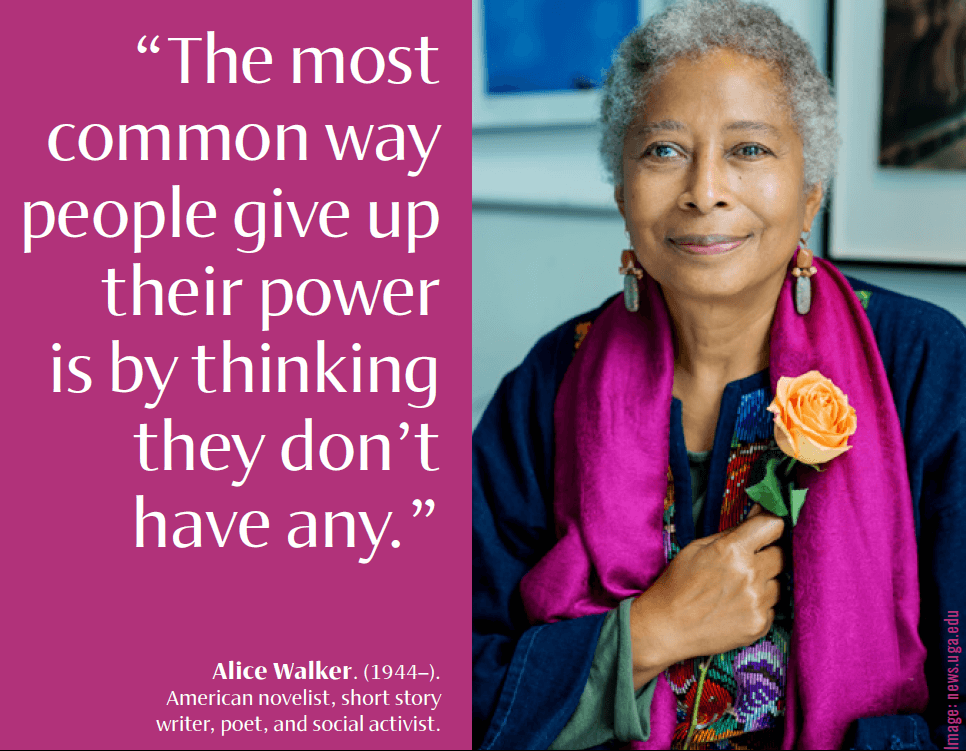
A technology considered for managing heat in spacesuit gloves is being repurposed for clothes. Textile marketer Louise Nicholson wanted to create specialty clothing that would help reduce discomfort for menopausal women and chanced upon the perfect material, which NASA funded. The cutting edge science that goes into all of their products rather than just wicking away sweat, allows their clothes control the production of moisture before it starts. … Read full text:
Fallen leaves floor cushions

Invite the magic of the fall season into your home with these leaves. 100% wool. www.uncommongoods.com
Say what?
what? Before you marry a person, you should first make them use a computer with slow Internet to see who they really are.” —Will Ferrell
Source: parade.com
BACHELOR’S DEGREE in Advertising

The Bachelor of Advertising (BS) program objective is to help students develop advertising campaigns that effectively communicate an organizations brand messages. The Bachelor of Advertising program is offered online via distance learning. After evaluating both academic record and life experience, AIU staff working in conjunction with Faculty and Academic Advisors will assist students in setting up a custom-made program, designed on an individual basis. This flexibility to meet student needs is seldom found in other distance learning programs. Our online program does not require all students to take the same subjects/ courses, use the same books, or learning materials. Instead, the online Bachelor of Advertising curriculum is designed individually by the student and academic advisor. It specifically addresses strengths and weaknesses with respect to market opportunities in the student’s major and intended field of work. Understanding that industry and geographic factors should influence the content of the curriculum instead of a standardized one-fits-all design is the hallmark of AIU’s unique approach to adult education. This philosophy addresses the dynamic and constantly changing environment of working professionals by helping adult students in reaching their professional and personal goals within the scope of the degree program.
Important:
Below is an example of the topics or areas you may develop and work on during your studies. By no means is it a complete or required list as AIU programs do not follow a standardized curriculum. It is meant solely as a reference point and example. Want to learn more about the curriculum design at AIU? Go ahead and visit our website, especially the Course and Curriculum section: https://wp24.aiu.edu/CourseCurriculum.html
Communication & Investigation (Comprehensive Resume)
Organization Theory (Portfolio)
Experiential Learning (Autobiography)
Academic Evaluation (Questionnaire)
Fundament of Knowledge (Integration Chart)
Fundamental Principles I (Philosophy of Education)
Professional Evaluation (Self Evaluation Matrix)
Development of Graduate Study (Guarantee of an Academic Degree)
Introduction to Mass Media
Principles of Public Relations
Persuasion
Advertising Media Planning
Advertising Creative Strategy
and Execution
Theories of Human Communication
Principles of Advertising
Advertising and Social Responsibility
Communication Law
Publication Production
Desktop Publishing
Computer Imaging
Advertising Campaigns
International Advertising
Public Relations
Advertising Research
Good communication skills
Able to think clearly and act quickly
Able to stay calm in difficult situations
Technical aptitude
Contact us to get started
Each graduate is encouraged to publish their research papers either online in the public domain or through professional journals and periodicals worldwide
aiu.edu/apply-online.html
Pioneer Plaza/900 Fort Street Mall 410
Honolulu, HI 96813
800-993-0066 (Toll Free in US)
808-924-9567 (Internationally)
aiu.edu/apply-online.html
Pioneer Plaza/900 Fort Street Mall 410
Honolulu, HI 96813
800-993-0066 (Toll Free in US)
808-924-9567 (Internationally)
Bachelor Thesis Project
MBM300 Thesis Proposal
MBM302 Bachelor Thesis (5,000 words)
Publication
Each graduate is encouraged to publish their research papers either online in the public domain or through professional journals and periodicals worldwide.
About Us

Accreditation
Atlantic International University offers distance learning degree programs for adult learners at bachelors, masters, and doctoral level. With self paced program taken online, AIU lifts the obstacles that keep professional adults from completing their educational goals. Programs are available throughout a wide range of majors and areas of study. All of this with a philosophically holistic approach towards education fitting within the balance of your life and acknowledging the key role each individual can play in their community, country, and the world.
Atlantic International University is accredited by the Accreditation Service for International Schools, Colleges and Universities (ASIC). ASIC Accreditation is an internationally renowned quality standard for colleges and universities. Visit ASIC’s Directory of Accredited Colleges and Universities. ASIC is a member of CHEA International Quality Group (CIQG) in the USA, an approved accreditation body by the Ministerial Department of the Home Office in the UK, and is listed in the International Directory of the Council for Higher Education Accreditation (CHEA). The University is based in the United States and was established by corporate charter in 1998.
Our founding principles are based on the United Nations Universal Declaration of Human Rights; per article 26, AIU believes that Higher Education is a Human Right. The University has implemented a paradigm shifting educational model for its academic programs that have allowed it to move closer to this goal through the self-empowerment of its students, decentralization of the learning process, personalized open curriculum design, a sustainable learning model, developing 11 core elements of the Human Condition within MYAIU, and utilizing the quasi-infinite knowledge through the use of information technology combined with our own capacity to find solutions to all types of global issues, dynamic problems, and those of individuals and multidisciplinary teams. Due to these differentiations and the university’s mission, only a reputable accrediting agency with the vision and plasticity to integrate and adapt its processes around AIU’s proven and successful innovative programs could be selected. Unfortunately, the vast majority of accrediting agencies adhere to and follow obsolete processes and requirements that have outlived their usefulness and are in direct conflict with the university’s mission of offering a unique, dynamic, affordable, quality higher education to the nontraditional student (one who must work, study what he really needs for professional advancement, attend family issues, etc.). We believe that adopting outdated requirements and processes would impose increased financial burdens on students while severely limiting their opportunities to earn their degree and advance in all aspects. Thus, in selecting the ASIC as its accrediting agency, AIU ensured that its unique programs would not be transformed into a copy or clone of those offered by the 10,000+ colleges and universities around the world. Since ASIC is an international accrediting agency based outside the United States, we are required by statute HRS446E to place the following disclaimer: ATLANTIC INTERNATIONAL UNIVERSITY IS NOT ACCREDITED BY AN ACCREDITING AGENCY RECOGNIZED BY THE UNITED STATES SECRETARY OF EDUCATION. Note: In the United States and abroad, many licensing authorities require accredited degrees as the basis for eligibility for licensing.

In some cases, accredited colleges may not accept for transfer courses and degrees completed at unaccredited colleges, and some employers may require an accredited degree as a basis for eligibility for employment. Potential students should consider how the above may affect their interests, AIU respects the unique rules and regulations of each country and does not seek to influence the respective authorities. In the event that a prospective student wishes to carry out any government review or process in regards to his university degree, we recommend that the requirements of such are explored in detail with the relevant authorities by the prospective student as the university does not intervene in such processes. AIU students can be found in over 180 countries, they actively participate and volunteer in their communities as part of their academic program and have allocated thousands of service hours to diverse causes and initiatives. AIU programs follow the standards commonly used by colleges and universities in the United States with regards to the following: academic program structure, degree issued, transcript, and other graduation documents. AIU graduation documents can include an apostille and authentication from the US Department of State to facilitate their use internationally.
The AIU Difference
It is acknowledged that the act of learning is endogenous, (from within), rather than exogenous.
This fact is the underlying rationale for “Distance Learning”, in all of the programs offered by AIU. The combination of the underlying principles of student “self instruction”, (with guidance), collaborative development of curriculum unique to each student, and flexibility of time and place of study, provides the ideal learning environment to satisfy individual needs.
AIU is an institution of experiential learning and nontraditional education at a distance. There are no classrooms and attendance is not required.
The AIU Difference
MISSION:
To be a higher learning institution concerned about generating cultural development alternatives likely to be sustained in order to lead to a more efficient administration of the world village and its environment; exerting human and community rights through diversity with the ultimate goal of the satisfaction and evolution of the world.
VISION :
The empowerment of the individual towards the convergence of the world through a sustainable educational design based on andragogy and omniology.
Organizational Structure
Dr. Franklin Valcin
President/Academic Dean
Dr. Ricardo Gonzalez
Chief Operation Officer
and MKT Director
Dr. Miriam Garibaldi
Viceprovost for Research
Dr. Ofelia Miller
Director of AIU
Juan Pablo Moreno
Director of Operations
Paula Viera
Director of
Intelligence Systems
Felipe Gomez
Design Director / IT Supervisor
Daritza Ysla
IT Coordinator
Nadeem Awan
Chief Programming Officer
Dr. Jack Rosenzweig
Dean of Academic Affairs
Dr. Edward Lambert
Academic Director
Dr. Ariadna Romero
Advisor Coordinator
Nadia Gabaldon
Academic Coordinator
Jhanzaib Awan
Senior Programmer
Leonardo Salas
Human Resource Manager
Benjamin Joseph
IT and Technology Support
Rosie Perez
Finance Coordinator
Chris Soto
Admissions Counselor
Dr. José Mercado
Chief Executive Officer
Chairman of the Board of Trustees
Linda Collazo
Logistics Coordinator
Irina Ivashuk
Alumni Association
Coordinator
Clara Margalef
Director of Special Projects
of AIU
David Jung
Corporate/Legal Counsel
Bruce Kim
Advisor/Consultant
Thomas Kim
Corporate/
Accounting Counsel
Camila Correa
Quality Assurance Coordinator
Maricela Esparza
Administrative Coordinator
Chris Benjamin
IT and Hosting Support
Mayra Bolivar
Accounting Coordinator
Roberto Aldrett
Communications Coordinator
Giovanni Castillo
IT Support
Jaime Rotlewicz
Dean of Admissions
Dr. Mario Rios
Academic Advisor
Michael Phillips
Registrar’s Office
Rene Cordon
Admissions Support
Jenis Garcia
Admissions Counselor
Ricardo González, PhD
Provost
Dr. Silvia Restorff
Academic Advisor
Dr. Prakash Menon
Academic Advisor
Carlos Aponte
Telecommunications
Coordinator
Dr. Nilani Ljunggren De Silva
Academic Advisor
Dr. Scott Wilson
Academic Advisor
Dr. Mohammad Shaidul Islam
Academic Advisor
Dr. Edgar Colon
Academic Advisor
Deborah Rodriguez
Academic Tutor Coordinator
Cyndy Dominguez
Academic Tutor Coordinator
Kinmberly Diaz
Admissions Support Tutor
Amalia Aldrett
Admissions Coordinator
Sandra Garcia
Admissions Coordinator
Jose Neuhaus
Admissions Support
Junko Shimizu
Admissions Coordinator
Veronica Amuz
Admissions Coordinator
Alba Ochoa
Admissions Coordinator
Contact Us
Atlantic International University
900 Fort Street Mall 905 Honolulu, HI 96813
Quick Links
Home | Spanish | Online Courses | Available Courses | Vrtual Campus | Career Center | Available Positions | Ask Career Coach | The Job Interview | Resume Writing | Accreditation | Areas of Study | Bachelor Degree Programs | Masters Degree Programs | Doctoral Degree Programs | Course & Curriculum | Human Rights | Online Library | Representations | Student Publication | Sponsors | General Information | Mission & Vision | School of Business and Economics | School of Science and Engineering | School of Social an Human Studies | Media Center | Admission Requirements | Apply Online | Tuition | Faculty & Staff | Distance Learning Overview | Student Testimonials | Frequently Asked Questions | Register for Program | Privacy Policy | FAQ








